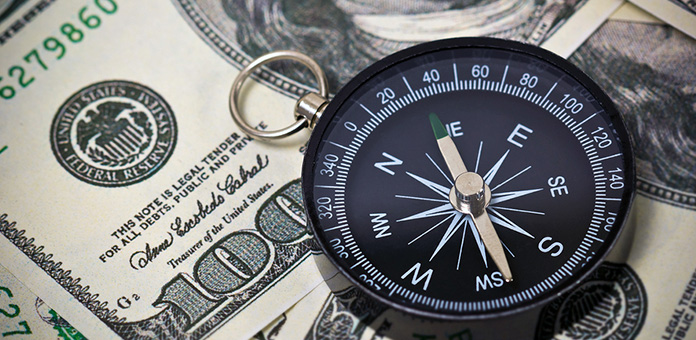
Quantitative easing, or QE, is a widely discussed phenomenon since the global financial crisis of 2008. What is QE and how does it work? Is it beneficial or detrimental to the economy? How does it influence gold prices?
Quantitative Easing Definition
Quantitative easing (GE) is an unconventional monetary policy of central banks intended to stimulate economies when usual methods have ceased to be effective. Central banks normally control inflation by lowering or raising the interest rate at which banks can lend each other money overnight, which is the basis for all other interest rates in an economy. In a sluggish economy, central banks will stimulate demand by lowering the overnight rate; in an overheating economy where inflation is a concern, central banks will cool off the economy by raising the overnight rate. These policies rest on the notion that companies invest more when interest rates, and therefore borrowing costs, are lower, and invest less during times of higher interest rates.
In times of major economic crisis, normal monetary policy tools might fail to work, such as after the global financial crisis in 2008. Even with interest rates at or near zero percent, many companies did not or could not borrow for investments, and instead hoarded cash as protection against an uncertain future. Central bankers therefore began to attempt to stimulate the economy by injecting new money into it through QE, which meant purchasing financial securities, typically government bonds, from banks with newly created money.
How Does Quantitative Easing Work?
QE works via the following process:
- First, central banks create new money that did not previously exist. They do so electronically, but it is akin to simply printing more paper money than existed before. As central banks are responsible for the amount of money in an economy, it is their prerogative to create new money from time to time, although doing so at quantitative easing levels is very unusual.
- The next step is to purchase government bonds from banks in the economy. As it happens, this is the same mechanism by which central banks normally raise or lower the overnight borrowing rate, effectively tweaking the supply and demand balance of these bonds to push the overnight borrowing interest rate up or down. These tweaks are normally done in relatively small amounts with existing central bank reserves, not newly created money. However, in QE, the central bank purchases large amounts of bonds, often with both short and longer-term maturities, and does so with newly created money.
- By purchasing government bonds from the banks in the economy, central banks give those banks an enormous amount of new capital to use in the economy. Not only do the banks receive cash for the bonds they sold, but they also have less risk against which they need to reserve capital. In short, QE gives banks in the economy more money to lend and improves their ability to manage their business risk.
Cons of Quantitative Easing
All expansionary monetary policy, including the normal raising and lowering of interest rates, can cause inflation. Creating entirely new money out of thin air is also considered a major risk for inflation, which is why central banks very rarely create large amounts of new money. As such, one major fear of economists worldwide is that QE would cause massive global inflation.
Another risk to QE is that in creating new money, central banks can cause their currency to depreciate against other currencies. Simply put, a currency’s exchange rate reflects the supply and demand for that currency versus other currencies, and if a massive injection of new money throws off this balance, the value of the currency will fall.
In truth, there is not universal agreement on the effectiveness of quantitative easing. The International Monetary Fund (IMF) stated in a 2009 paper that QE was successful in bringing stability to the global economy after the financial crisis. 1 However, there are many critics: in 2016, for example, British Prime Minister Theresa May openly criticized the contribution of QE to income inequality.
Quantitative Easing and Gold Prices
The economic uncertainty surrounding QE generally causes a flight to safety, and gold is widely viewed as a safe haven against economic uncertainty. Given that QE is intended to stimulate investment but also is associated with economic instability, it is in many ways the perfect stimulus for gold prices. Additional money in the economy mixed with fear means higher demand for gold, and certainly from 2009 to the end of quantitative easing in 2014 spot gold prices soared. With speculation that central banks may start using QE again to stimulate the economy, this could continue to be the case. For now, the long-term effects of QE on gold prices will require further study in coming decades, but for now it appears that QE is bullish for gold.


